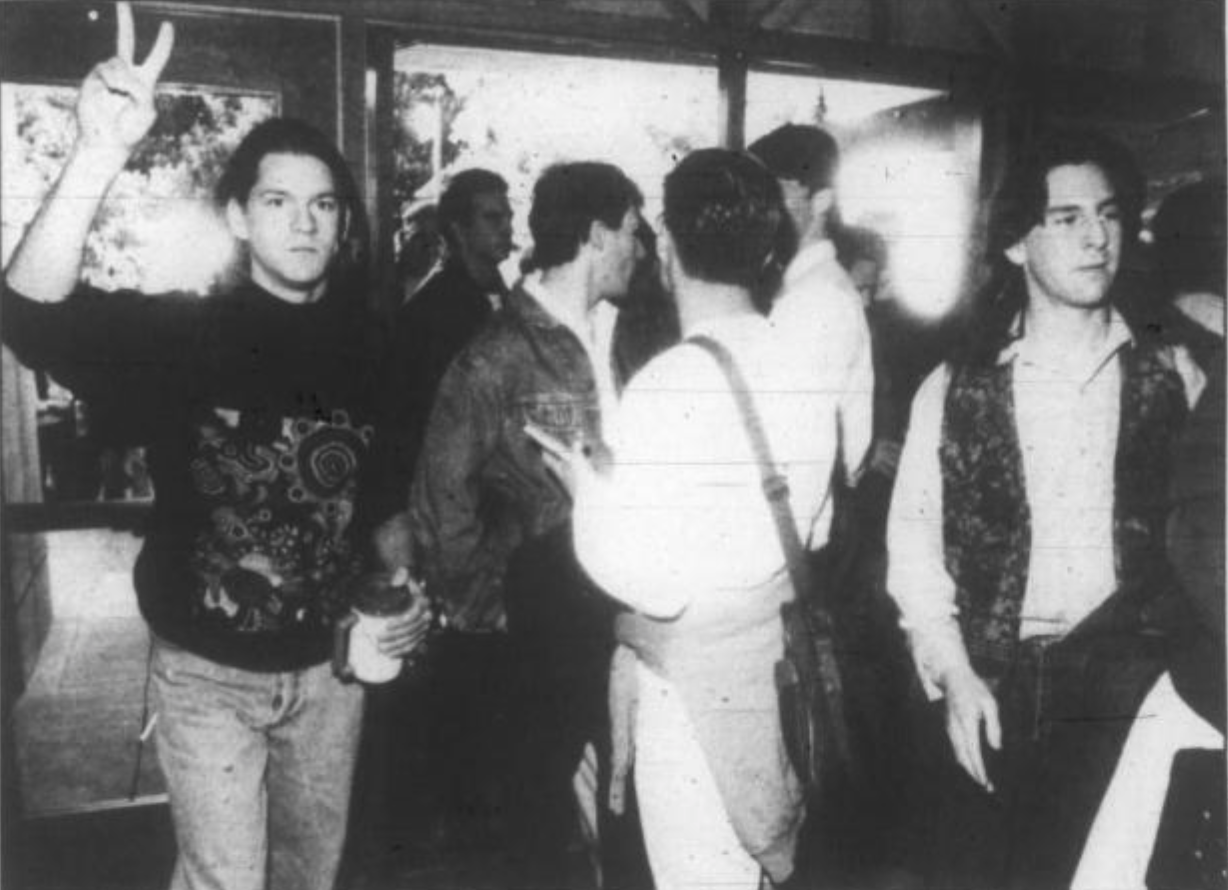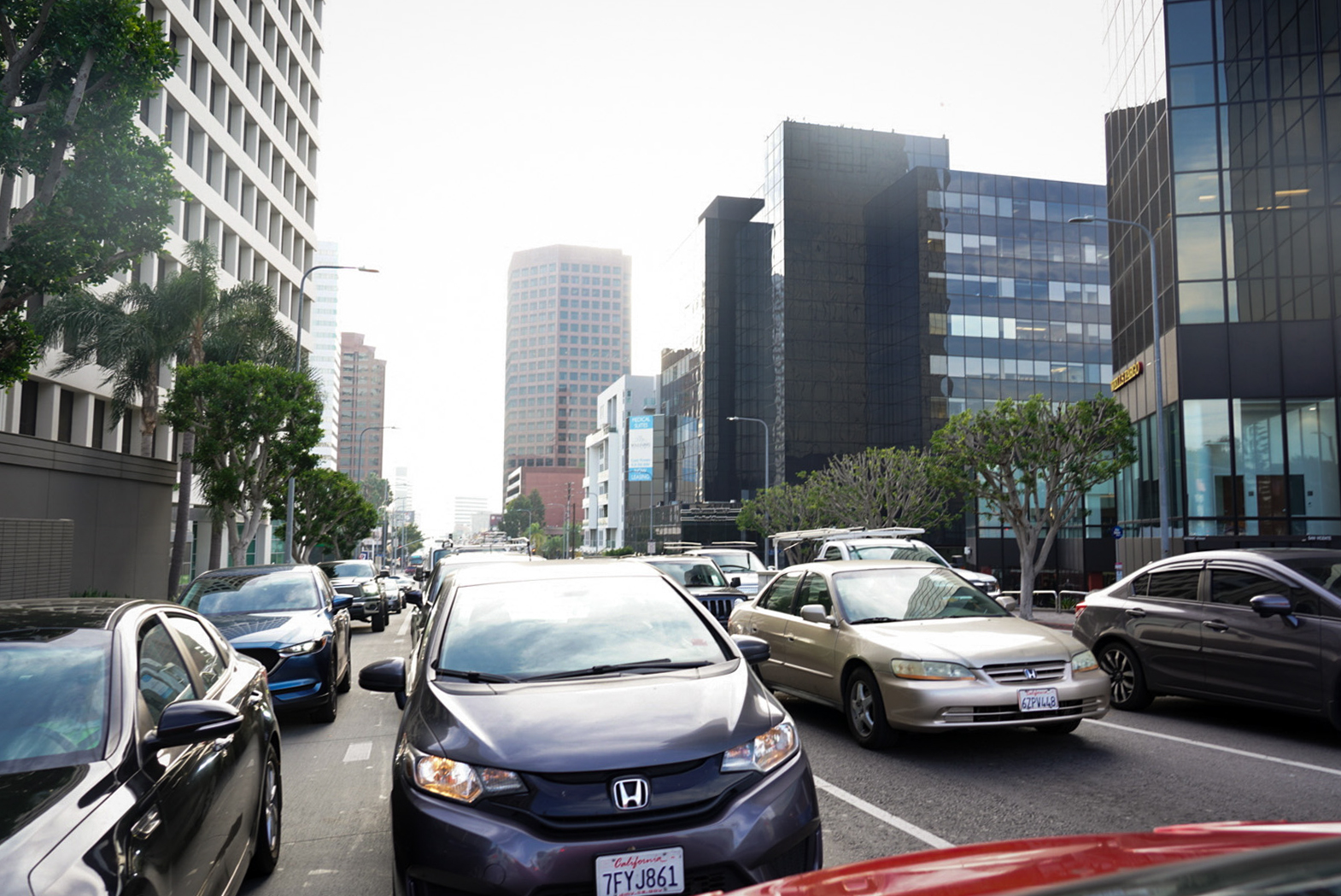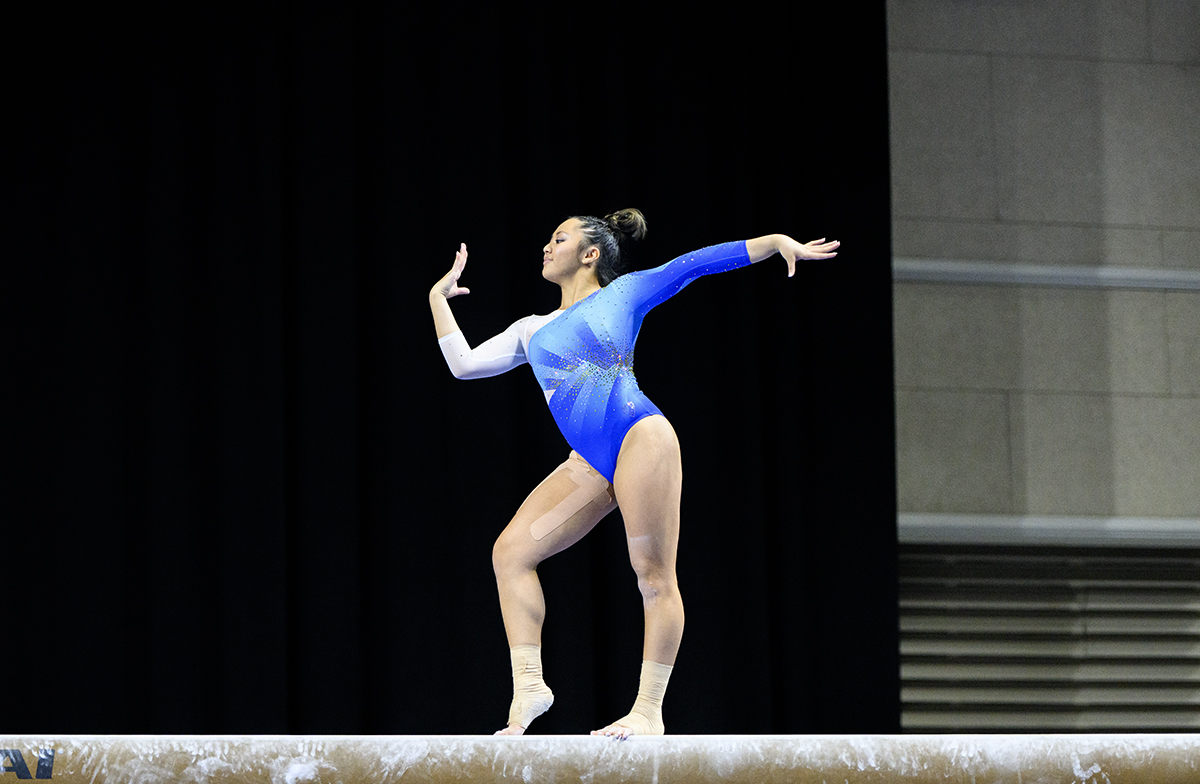Courtesy of Shelly Simon
By Katy Nicholas
August 23, 2023 at 9:38 p.m.
The young woman ran for her life through the halls of Covel Commons. Familiar Mediterranean scents wafted up from Epicuria at Covel below, as the Creature stalked its next target. There was no hiding on the Hill. She turned and confronted the beast head on.
“And cut!”
To a passerby, it might have looked like the woman was running from shadows and talking to herself between UCLA’s dorms. But once rising fourth-year film and television student Brendon Milan-Howells’s crew digitally inserted its monster, Covel Commons became unrecognizable. By transforming UCLA’s campus into a movie set, Milan-Howells’s student film joined ranks with “Legally Blonde,” “Oppenheimer” and dozens of other iconic movies.

Since the 1930s, UCLA has starred in over 300 films and TV shows. To manage its on-screen popularity, the UCLA Events Office has created strict filming guidelines that apply to every production, no matter its budget or scope. For professional filmmakers, these clear guidelines streamline their projects, but for student filmmakers finding their footing in the industry, the process can become a major obstacle.
Location managers need to start the detailed permitting process up to a month before cameras arrive at UCLA. The Events Office works with the filmmakers to plan every detail of their shoot in advance, from the exact locations they will film to where they will park their vehicles.
The Events Office requires a unique permit for each location on campus. When a person wants to film in the Franklin D. Murphy Sculpture Garden, the Events Office will ask what part of the sculpture garden. If a student asks to film a single table at Northern Lights, they will need an additional permit to put their equipment on a second table.
William McDonald, head of cinematography at the UCLA Department of Film, Television and Digital Media, said the more complex a shoot, the more permits are required.
This procedure presents a major challenge for some students.
“It’s tough getting permits on campus,” Milan-Howells said. “It really is.”
According to a statement from the UCLA Events Office, about 75% of UCLA student permit requests are fulfilled. The office also prioritizes UCLA student permit requests over outside entities, such as film students from other schools.
Additionally, film sets cannot show any brand-protected UCLA signage or colors, so production teams have to get creative to circumvent these restrictions. For example, when writer and producer Liesl Wilke shot “Lines” in December, she disguised 40 UCLA banners with green felt. Wilke also scissor-lifted gargoyles over Kerckhoff Hall, all to create a fictional school that did not obviously resemble UCLA.
Although professionals like Wilke alter their set to fit their unique stories, the physical image of campus is one of the reasons individuals and organizations widely seek out UCLA’s filming permits. In one of his film classes, McDonald assigns students to only film on campus. This restriction turns out to be a blessing in disguise, he says, as the campus is so versatile.
“You can be in a bamboo forest, and you can make a bamboo forest be anywhere on planet earth you want,“ McDonald said. “Then shoot in the Royce Hall quad, and suddenly you’re in Renaissance Italy, if you want it to be.”

But transforming UCLA’s campus into another space and time can be easier said than done when factoring in the Event Office’s long permitting process. This extended timeline often deters students from even applying for a film permit.
Christian Alan, who graduated from UCLA in 2023, filmed several short films and web series during his time at UCLA. Rather than work on campus, Alan opted to use various apartment buildings as unconventional sets. He said his team did not use UCLA because of the permitting requirements, preferring the convenience of accessing locations through friends.
However, Alejandro Martin-Cruz, Alan’s collaborator and fellow class of 2023 alumnus, said UCLA’s campus still inspired their films. The duo developed a pattern of locating compelling on-campus locations then seeking similar spots off campus to mimic UCLA’s aesthetic without the permit hassle. For example, they originally planned to film a 2023 web series episode within The Study at Hedrick, one of UCLA’s dining halls, but they ended up reserving space in a different cafe that resembled the on-campus location.
“Sometimes, because film permits are more for higher production things rather than student films, we would have to find alternatives,” Martin-Cruz said.
Milan-Howells persisted through the process in order to get a film permit for the sex-positive short film he produced at Covel Commons, “After Hours.” Milan-Howells said the eerie atmosphere created by the commons made him want to secure the specific location for the film.
Other students are not as successful securing permits as Milan-Howells. McDonald said this permitting process is a key lesson in and of itself for students hoping to manage post-grad productions.
“It’s very good training,” McDonald said. “You have to give them a kind of lead time, so it’s very good at teaching people how to go through a process to secure what it is they want.”
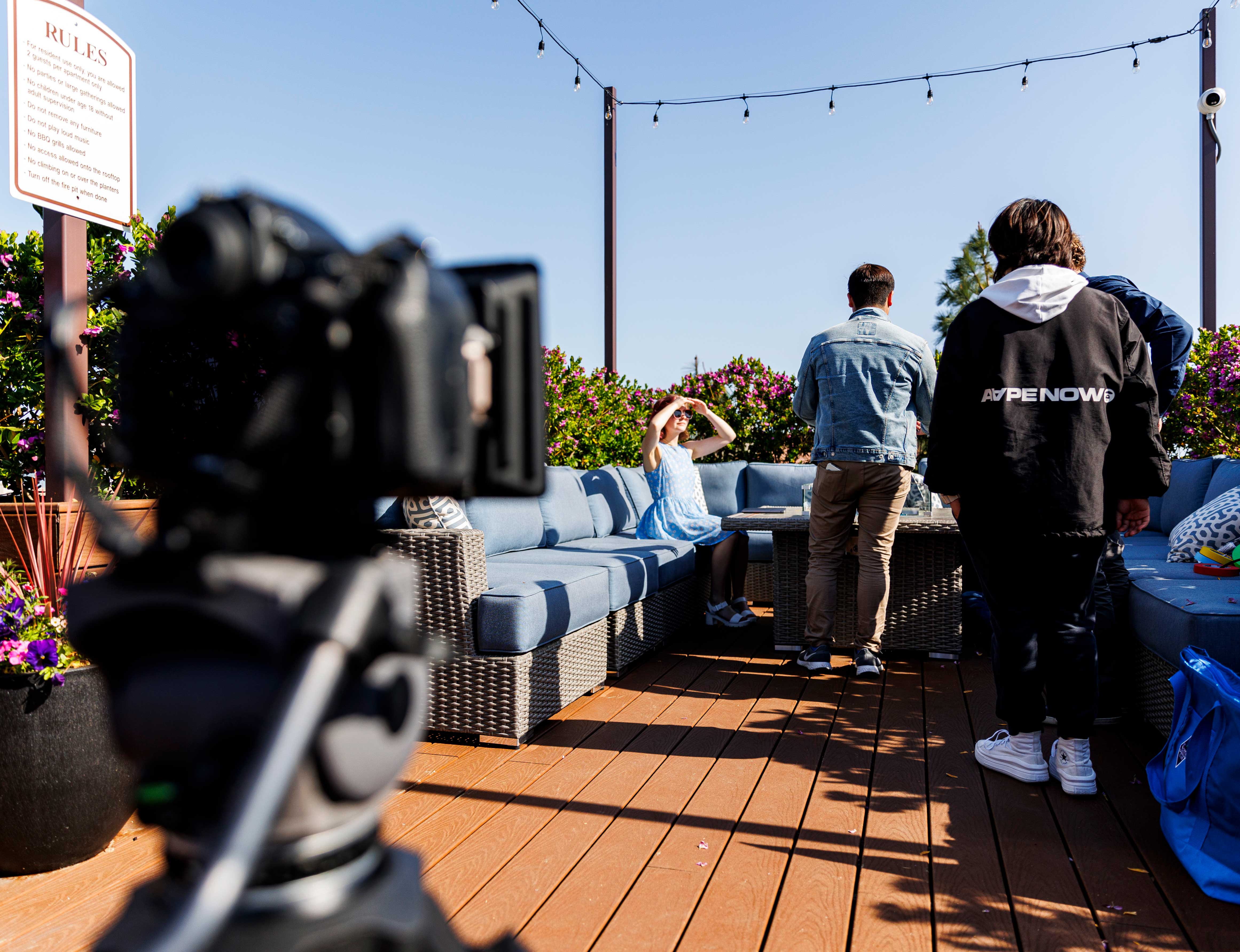
Outside filmmakers encounter similar bureaucratic hurdles to UCLA students, but the professionals express different perspectives on this slow-moving process. Several non-Bruin filmmakers were pleasantly surprised by the ease of UCLA’s system compared to other popular locations. Jessie Gonzales, a 2023 graduate of California State University, Northridge, filmed part of the documentary “Eye of the Sun” on UCLA’s campus. Gonzales’ documentary features a NASA scientist who spoke to a group of data scientists at UCLA in late March. Gonzales said that compared to their other filming locations, including the Griffith Observatory and locations throughout Pasadena, UCLA was a smooth and easy process.
“There wasn’t as many hurdles as some of the other locations we had to film at,” Gonzales said. “UCLA was really good at that. And, of course, it can’t go wrong with having a pretty campus.”
Professional filmmakers also praised UCLA’s process when compared to other universities. Wilke shot her autobiographical short film “Lines” on campus. She initially reached out to Princeton University, the real-life setting of her story, for filming permissions. She said she was turned away because Princeton only permits research-based or documentary films.
“The process there is, they just said, ‘No,’” Wilke said. “I’m kind of mad about that. I went to school there, I sent you checks, and really, this is a true story of something that happened there. So why not?”
She then looked into the University of Washington because of its campus’s aesthetic similarities to Princeton. However, the school also rejected her permit requests because of the toll recent filming projects took on the campus.
When Wilke reached out to UCLA, she was met with more paperwork than the other universities, but she observed a more organized and established system for receiving the rights to film. She was not immediately shut down as she was at the narrowly focused Princeton or the newly-cautious UW.
Outside organizations also have to pay for each location they permit, which can cost tens of thousands of dollars. Wilke said that although UCLA was the most expensive location for their whole production, she found the price tag worthwhile and preferred paying a university instead of a movie studio.
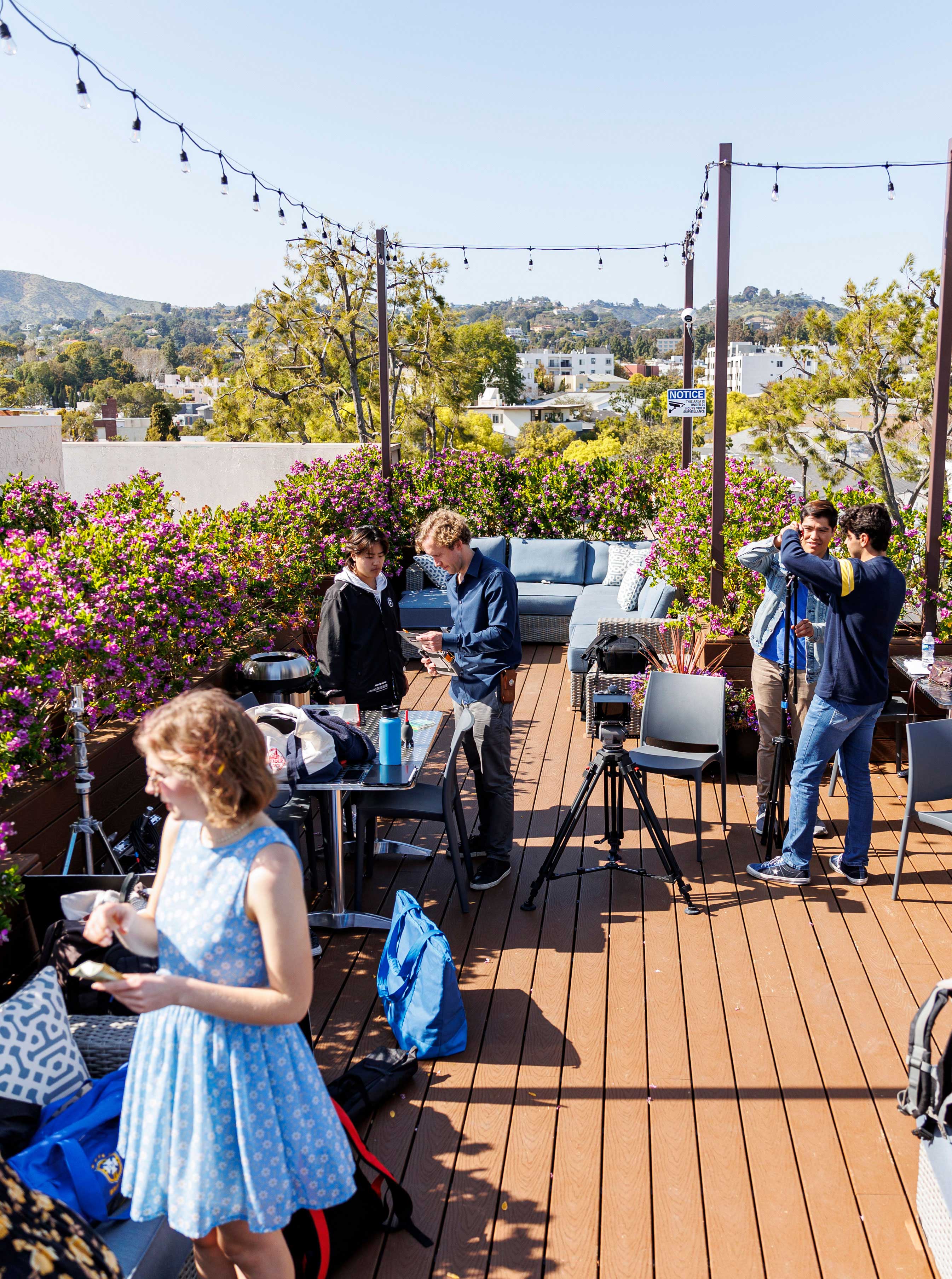
According to the Events Office, these permit fees generate funding toward student services such as recreation and ASUCLA programming. The Events Office also waives Bruins’ permitting fees, so UCLA student filmmakers only pay for their direct costs like parking.
The fact that this otherwise expensive option is nearly free for UCLA students enhances the draw for permitting by students. Despite the long-winded process, many students want to utilize this free resource before they graduate.
While Milan-Howells opted to repeatedly jump through hoops to score the set of his dreams for “After Hours,” the permitting process continues to push him and other Bruin filmmakers to think beyond rigid guidelines when sourcing locations.
For their most recent filmmaking venture, Martin-Cruz and Alan found themselves on the rooftop of a Westwood apartment. The duo worked in the afternoon sun to wrap up the last episode of their teen drama web series, “An Unplanned Milestone.” Unlike applying for the Covel Commons set, securing this picturesque Los Angeles view only required texting a friend.
A crew member laid on his stomach holding the concealed microphone behind a couch pillow, and Alan hovered nearby with a clipboard. The actor repeated her shocked reaction dozens of times as murmurs of 405 Freeway traffic and buzzing Ronald Reagan UCLA Medical Center helicopters interrupted her line.
The cameras kept rolling until Alan finally exclaimed, “And cut!” for all the rooftops of Westwood to hear.

